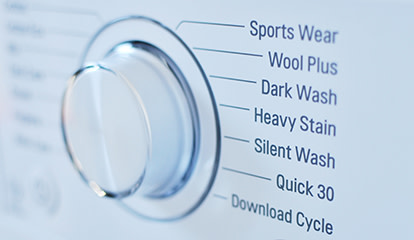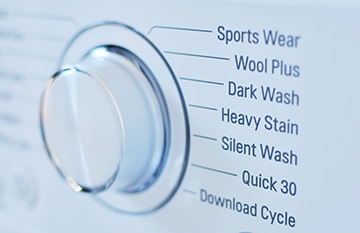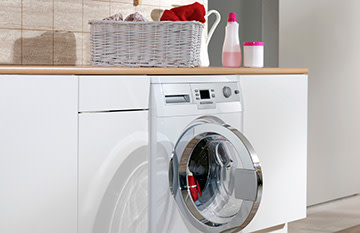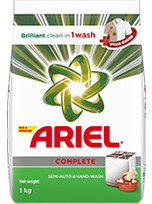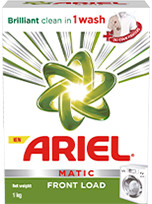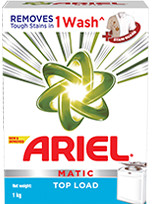All washing machines have the same purpose – to wash clothes – but when you get into the details about the types of washing machines on the market, such as the difference between top-load and front-load washing machines, things get a little complicated. Thankfully, Ariel is here to help. Our products can be used with different types of washing machines, so we’ve got you covered. We’ve compiled some useful information for you, so you can find the best fit for you and your laundry needs. Read on to find out the main differences between top-load and front-load washing machines, and fully automatic and semi-automatic washers.
What are the differences between top-load and front-load washing machines?
The main difference between these two washing machines is where you’ll find the door. Top-load machines are loaded from the top, whereas front-load machines have the door at the side of the machine. Apart from the location of the door, there are a few more differences between the models:
The main differences are:
Structure. A front-load machine has no agitator and uses paddles on the side of the drum. These washing machine features mean that front-load washing machines are generally gentler on your clothes than top-load ones.
Capacity. If you have a top-load machine with an agitator, then this takes up more space, so front-load washers can often take larger loads.
Electricity. Because you can wash a larger load in a front-load washing machine, you’ll need to use the washer less, and you’ll save more money in the long run, especially if you use an economical washing machine.
Water. Front-load washing machines typically use less water to wash your clothes than top-load washing machines.
Space. Some top-load washing machines are narrower, so top-load washing machines may be easier to fit into smaller spaces.
Price. You’ll find that top-load washers come at lower prices on the market than front-load washers.
When choosing between a top-load and a front-load washer, just make a list of your needs, and then prioritise them to help you make your decision.
What are the differences between fully automatic and semi-automatic washing machines?
The main difference between semi-automatic and fully automatic washing machines is that the latter does everything with the touch of a button, while semi-automatic washing machines may require you to move the wet clothes from one tub to another for spin drying, for example. We have detailed descriptions and guides to both fully automatic and semi-automatic washers but here are the main points for comparison:

Structure. Semi-automatic washers require manual intervention after the wash cycle ends. They have two tubs—one for washing and one for spin drying—and you have to move the clothes between them. Fully automatic washing machines have one tub, and they automatically start the spin-drying cycle as soon as the washing cycle has finished.
Price. Semi-automatic washing machines tend to be on the less expensive side, but if you don’t mind the extra work, it could be a nice way to save some money.
Water. Fully automatic washers require more water than semi-automatic ones, but in return, they’re much more convenient.
Time. With a semi-automatic washing machine, you have to do things manually, so washing will definitely take up more of your time. Fully automatic washers do everything with the touch of a button.
Size. Semi-automatic washers are larger, because they have two drums, so they definitely take up a bit more space. If you’re short on space, a fully automatic washer might be the better choice.
Power. Fully automatic washing machines consume a bit more power, so they will cost a little bit more every month.
Quality. Semi-automatic washing machines will typically not be able to provide the same washing quality as fully automatic washers.
Related articles
- Read More
How should I use my washing machine to ensure its lifespan longevity?
Your washing machine is a prized household item.
- Read More
How to choose a budget and eco-friendly washing machine for your home
When you get the right washing machine, sometimes you can save money by using a low energy consumption washing machine or by choosing a low water usage washing machine.
- Read More
10 things you should know about a washing machine
If you’re looking to buy a washing machine, it’s important to know your needs and what kind of machines are out there.

